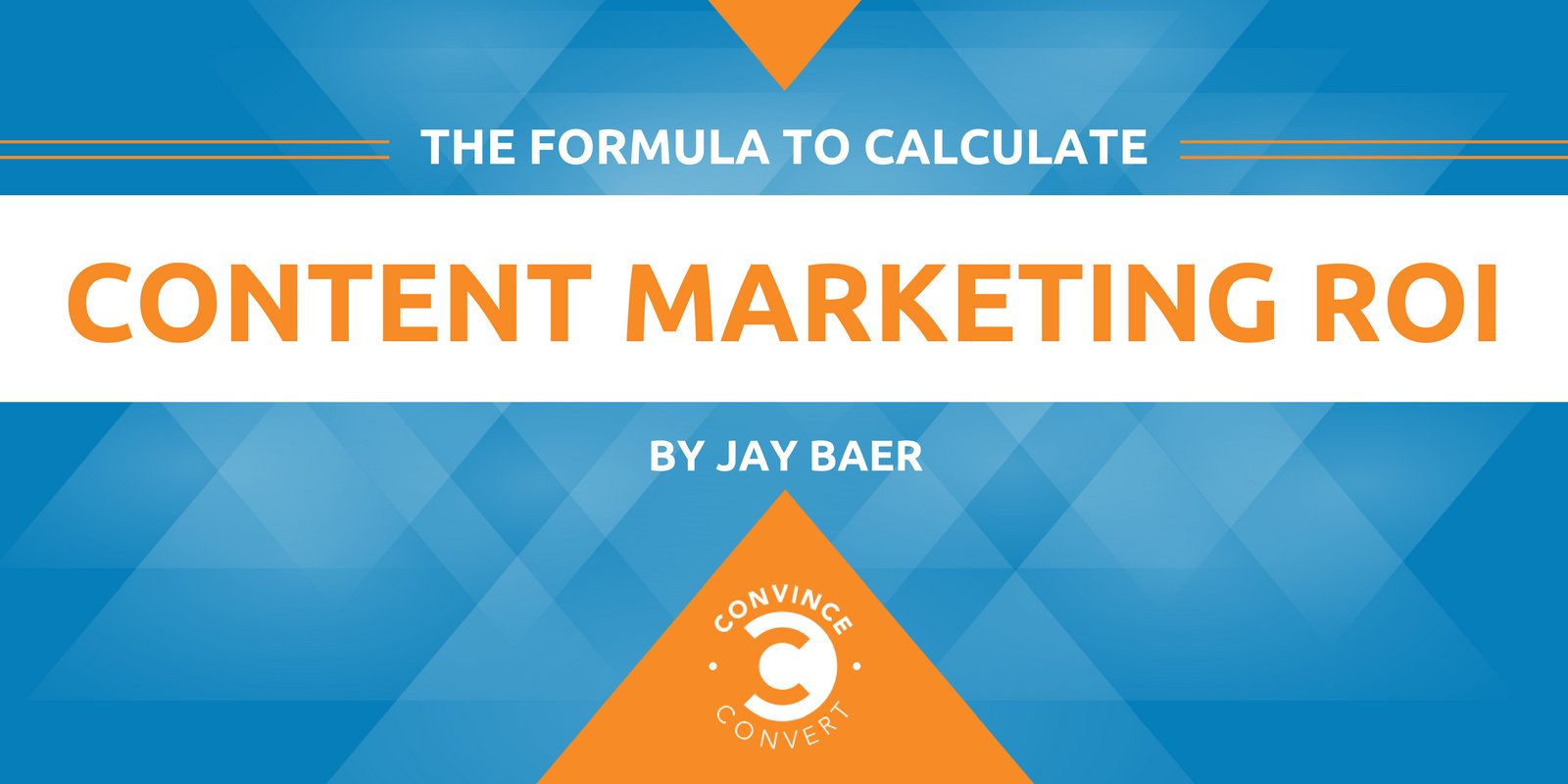The Formula to Calculate Content Marketing ROI. Each episode interviews one of the country’s leading fireworks show producers (your customers and potential customers). The Content Marketing ROI Formula First, calculate your investment. (10 hours per show x two shows x $60/hour) Your content marketing coordinator also invests about six hours per podcast episode, and an additional eight hours per month on the Fireworks Follies email newsletter to which customers and prospects can subscribe. So, your monthly investment in the program is $7,850: $900: Billy $1,200: You $750: Your coordinator $1,500: Editor $2,000: Social ads $1,000: Hosting, logo, email software $500: Ebook Now, you must calculate the return. (Make sure to not double-count new customers who both download the ebook and get the newsletter) Each month, the podcast is responsible for four new customers. (Three from the ebook via 150 downloads x two percent conversion rate, and one from the email via 100 subscribers x .5 percent conversion rate) Your average customer spends $40,000 over the course of their relationship with the company, and your profit margin averages 15 percent. The ROI for this podcast is 205 percent. Calculating ROI for B2B versus B2C Companies Content marketing ROI calculations are indeed easier for B2B companies, because they almost always have visibility at the transaction layer. Often, the best way to get at this data and find a relevant stand-in for precise Return is with survey work.

With content marketing becoming more and more ingrained in companies of all sizes and types, it’s only natural that executives are starting to increase scrutiny of content marketing budgets and expenditures. Like social media, content marketing is by no means free. As Charlene Li once said, “It’s not inexpensive; it’s just different expensive.”
If you’re a content marketing practitioner, manager, or director in anything beyond a very small organization, at some point you’re going to be asked to justify all this content.
The best way to do so is with an actual ROI calculation.
It’s important to note here that when I say ROI, I mean ROI, which is an abbreviation of “return on investment.” What ROI is and how it is calculated mathematically isn’t a point of debate. It is a formula, the same way converting fahrenheit to celsius is a formula.
Now, you may be unable—or unwilling, or even afraid—to calculate your actual return on investment for a particular content initiative. In that circumstance, you might select to use instead some other “success metric” or KPI, an acronym for “key performance indicator.” But, if you are not calculating ROI per se, don’t call your preferred performance measures ROI.
Content Marketing ROI Set-Up
First, know that you should measure content marketing ROI at the initiative/campaign/program level. You can calculate the ROI of your blog. You can calculate the ROI of your webinar series, etc. Once you calculate the ROI of your specific programs, you can roll all that data together to figure your overall content marketing ROI across the entire business, if you like.
To measure ROI, you have to know, in as much detail as possible, the R (return) and the I (investment) of your content initiative.
Here’s how you’d figure it out for a podcast:
Let’s say you run a commercial fireworks business that sells shells (by the sea shore) to producers of fireworks shows. It’s a highly targeted, B2B business with moderate competition, and quite a bit of seasonality.
As a genius content marketer, you know you need to create awareness among your high-value audiences, and that you further need to use content to create “hand raisers”—potential customers that will trade their personal information for access to content.
You decide to use a podcast as the door opener, and an ebook as the data collection magnet.
The podcast is called The Fireworks Files. It’s a twice-monthly video podcast available on your website, YouTube, and iTunes. Each episode interviews one of the country’s leading fireworks show producers (your customers and potential customers). The show is hosted by Billy “Bang” Bangerson, your Director of Sales.
In each episode, Billy promotes the company’s “Fireworks Tips and Tricks” ebook, downloadable from a landing page in exchange for email address, and some other information.
This whole endeavor requires a fair bit of work. The question you need to answer is whether it’s worth it. Here’s how.
The Content Marketing ROI Formula
First, calculate your investment.
Between prep and recording, Billy spends three hours per show. Billy’s pay rate is $100/hour. Add a 50 percent overhead factor on top of that to cover office space, equipment, health insurance, etc. (To be precise here, ask your accounting people or CEO what your company’s overhead factor is, and use that number. To calculate pay rate, use annual salary divided by 2000).
It costs the company $900 per month for Billy to be a part of this. (Three hours per show x two shows x $150/hour)
You spend 10 hours per show as the show producer. Your pay…

COMMENTS